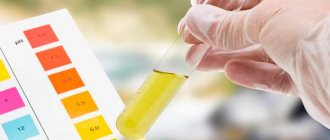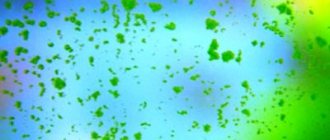From this article you will learn:
- pH value and benefits of alkaline water
- Methods for measuring pH levels
- 7 Easy Ways to Get Alkaline Water at Home
- Benefits of using an ionizer to produce alkaline water
- Rules for drinking alkaline water
Many fans of a healthy lifestyle are interested in how to get alkaline water at home. After all, the question of its benefits has not even been raised lately thanks to numerous studies conducted by specialists.
In fact, there are many ways to make alkaline water. They may differ from each other in technology, as well as the need to invest certain financial resources. But they all have one thing in common: simplicity. That is, you don’t have to make any special efforts to get results.
Alkaline water
To understand the characteristics of a liquid, a number of issues should be considered.
Acid-base balance
The chemical properties of water and solutions based on it are determined, among other things, by the concentration of hydrogen ions and hydroxyl groups. The quantitative ratio of these elements is called acid-base balance. The indicator is indicated by pH symbols and a number from 0 to 14.
Explanation of the parameter value:
- Less than 7 is an acidic solution.
- 7 - neutral.
- More than 7 is an alkaline solution.
pH in the human body
Normally, the acid-base balance of the blood is 7.40+/-0.02. The pH of saliva is 7.0-7.5. Other healthy body fluids are also predominantly slightly alkaline. Gastric juice has the lowest pH.
What problems can low PH cause?
If the pH is low, the environment in the pool will be acidic. Hydrogen cations appear, which oxidize surrounding substances.
This leads to a number of problems:
- metal parts in the pool begin to rust;
- equipment deteriorates;
- the grout between the tiles is destroyed;
- The skin of people who have swam in the pool turns red and itches.
In addition, some disinfectants work better at a neutral or slightly alkaline pH. Therefore, before applying them, always check the acidity level.
A factor in the development of diseases is an imbalance of acids and alkalis
Many chemical processes constantly occur in a living organism. A pH level above 7 is a condition for their normal occurrence.
For a number of reasons, the indicator may shift to the sour side, for example:
- Poor nutrition. The most common violations are the predominance of synthetic food and products with chemical additives in the diet, and a lack of vegetables and fruits.
- Air pollution, smoking.
- Lack of physical activity.
As a result, the following phenomena occur:
- The reaction of the immune system is dulled, metabolism, the production of hormones and their action, the processes of signal transmission along nerve fibers, etc. are slowed down and distorted.
- Pathogenic microflora feels more comfortable.
- Free radicals are formed.
The latter circumstance often becomes the cause of the formation of malignant tumors.
Why can PH drop and how to prevent it?
There are several reasons why pH levels may drop:
- The pool is washed with acidic agents.
- Add water that does not meet the standards.
- The reading level of a pH meter is affected by temperature. The higher it is, the lower the pH value.
- The pH at the surface of the water can lower carbon dioxide from the atmosphere.
To maintain the indicator always at an acceptable level, it is necessary to periodically measure it and add PH-increasing agents.
Benefits of alkaline water for the body
According to a number of researchers, a liquid with a pH of 8-9 helps normalize this indicator in the body. As a result, numerous improvements occur.
Benefits of alkaline water for the body.
For metabolism
Stimulation of metabolism ensures timely removal of waste and toxins and tissue renewal. The effect is most pronounced when drinking an alkaline drink in the morning on an empty stomach. As a result, the aging process slows down and the problem of excess weight is solved.
Alkaline water helps you lose weight.
For the liver
When you abuse harmful products, this organ is the first to suffer. Water with a high pH will support it and help the body get rid of toxins after a heavy feast.
Positive effects are also observed in liver diseases such as cirrhosis, hepatitis, and jaundice. Before taking it, you should consult your doctor: in some cases (for example, with kidney disease), the alkaline liquid will have a negative effect on the liver.
For diabetics
Glucose is a strong oxidizing agent. At elevated concentrations in the blood, it harms the entire body, primarily affecting the kidneys and eyes.
In type II diabetes, one of the reasons for high sugar levels is the low quality of your own insulin.
By normalizing pH, alkaline drinking can improve this situation. It is also prescribed to remove acetone: in decompensated diabetes, its level is also elevated.
Alkaline liquid is not able to normalize glucose levels in type I disease. In this case, only insulin therapy will help.
For the urinary system
The drink reduces the risk of kidney stones and improves their condition. Having a diuretic effect, it eliminates fluid stagnation. The condition of the entire excretory system improves. For women, this drink is recommended for frequent cystitis.
For the nervous system
The process of signal transmission in the fibers of the central nervous system involves potassium and sodium ions and special chemical agents - neurotransmitters. When the body becomes acidic, this process is disrupted. In particular, potassium and sodium are released into the blood to alkalize it.
As a result, the following phenomena are observed:
- depression;
- worsening sleep;
- lethargy, chronic fatigue.
Alkaline drinking normalizes the situation.
Alkaline water is recommended for insomnia and fatigue.
For the bones
In addition to potassium and sodium, calcium contributes to alkalization of the blood. At low pH, the body removes it from the bones into the blood using parathyroid hormone. The skeleton becomes fragile, joint pain appears. Regular intake of alkaline liquid will prevent such phenomena.
For the prevention of cancer
In an acidic environment, neoplasms, incl. malignant, develop more actively. This process can be slowed down by drinking drinks with a higher pH. But it is not a cure for cancer; the help of official medicine is required.
For immunity
At an acidic pH, the body's defenses suffer for a number of reasons:
- In such an environment, microorganisms actively multiply.
- Tissues lose microelements.
- The innervation of organs deteriorates.
Normalizing the acid-base balance will restore immunity. This is especially necessary during a flu epidemic and climate change.
For the heart and vascular system
Due to its diuretic effect, alkaline liquid helps overcome hypertension. The load on the heart is reduced, strokes and ventricular ischemia are prevented.
At the same time, normalizing pH helps cleanse blood vessels of cholesterol plaques. With the restoration of their lumen, the organs receive more nutrients and oxygen, and myocardial infarction is prevented.
The functioning of the heart and blood vessels improves after drinking alkaline water.
For the gastrointestinal tract
Alkaline drinking is useful for high acidity of gastric juice: it eliminates abdominal pain, relieves heartburn, and helps restore damaged areas of the mucous membrane (gastritis, stomach ulcers). The beneficial intestinal microflora is activated and the pathogenic one is suppressed.
For good skin condition
Collagen and hyaluronic acid, which retain moisture, give the body a healthy appearance. In an acidic environment, these substances are destroyed and the skin loses its attractiveness.
Regular consumption of water with a high pH in combination with a healthy lifestyle helps prevent the appearance of wrinkles and sagging.
Drinking alkaline water improves skin condition.
Alkalinity Study II: People
Under extremely alkaline conditions, normal cells die.
Published in the Journal of Biological Chemistry, the study found that alkalosis (increased cellular pH) causes alkaline-induced cell death as a result of changes in mitochondrial function.
Another study from Cornwall University states that antioxidants have not proven effective against many neurodegenerative diseases, and this may have to do with the way mitochondria operate within the cell at certain pH levels.
A number of scientific studies argue against alkalinity, at least in the area of cancer prevention or treatment.
Consider the research of Robert Gilles, who studied tumor formation and acidity.
According to Gilles, tumors are acidic in nature - even in an alkaline cellular structure.
In other words, they produce their own acidity.
Scientists who are developing prototypes of potential new anticancer drugs that selectively kill tumor cells by disrupting intracellular pH regulation have discovered that alkaline drugs do NOT have the desired effect—unlike highly acidic ones.
To knock out wedge with wedge - fight acid-loving cancer cells with acid! You just need to REDUCE the alkalinity inside the cancer cell - that’s all.
So, all these salesmen promising that alkaline water will reduce the risk of cancer have no idea what scientific research has proven.
Even more interesting is a 2005 study from the National Cancer Institute that reexamined the use of vitamin C (ascorbic acid) for cancer treatment.
It has been established that when administered intravenously in pharmacological doses, ascorbic acid successfully kills cancer cells without causing harm to normal cells . This is another example of how cancer cells are vulnerable to acidity rather than alkalinity.
Obviously, you shouldn't oversimplify the link between alkalinity and cancer by jumping to premature conclusions - like those who are trying to profit from your fear. The point is that alkaline water is not a miracle cure for cancer.
List of popular names of alkaline mineral waters
The following brands have become widely known:
- "Essentuki No. 17". Medical table hydrocarbonate. It is mined in the Caucasus. Before use, you should consult your doctor.
- "Naftusya." Hydrocarbonate, rich in organic elements, calcium and magnesium. Tastes like oil. Refers to medicinal. The best effect is obtained when consumed in a pump room directly at the place of extraction.
- "Narzan". Medicinal-table sulfate with natural carbonation. It is mined in the North Caucasus.
- "Smirnovskaya". Medicinal-table sulfate with weak mineralization. It is mined near the city of Zheleznovodsk.
- "Borjomi". Medicinal-table sodium bicarbonate, mined in Georgia. Rich in microelements, has a pleasant taste. Available only in glass bottles.
- "Slavyanovskaya". Medicinal-table sulfate-hydrocarbonate with a sour taste. Bottled in the Stavropol region.
There are fakes, so it is recommended to purchase mineral waters in stores of large retail chains.
Types of alkaline mineral water.
The best ways to maintain the correct acid-base pH balance
First, you can reduce your risk of falling out of healthy pH by looking at how your lifestyle and habits may be affecting your nutrient levels, gut function, and immune system.
Below are the main factors that contribute to the growth of acidity (acidosis) in your body
- Alcohol and drug use (including acetazolamide, opioids, tranquilizers, and aspirin)
- Excessive use of antibiotics
- Kidney disease or kidney dysfunction
- Poor digestion and poor gut health
- Eating a lot of processed and refined foods containing salt, preservatives, etc. []
- Low dietary intake of potassium, calcium and other beneficial minerals []
- High consumption of artificial sweeteners, food colors and preservatives
- Pesticides and herbicides that may remain in plant products
- Chronic psychological stress
- Sleep disorders, such as apnea
- Decreased nutritional levels in food due to industrial agriculture and poor topsoil quality
- Low levels of fiber in the diet
- Lack of exercise (sedentary lifestyle)
- Excess animal meat in the diet
- Excessive ingestion of cosmetics and plastic residues into the body
- Exposure to chemicals from household cleaning products, building materials, radiation from computers, cell phones and microwave ovens
- Environmental pollution
- Poor chewing and eating habits (eating quickly without chewing thoroughly)
- Lung disease or damage, including emphysema, chronic bronchitis, severe pneumonia, pulmonary edema, and asthma
How to Determine pH Level
Special pH strips are available. They are sold in our online store with delivery throughout Russia.
After wetting with liquid, the strip changes color. The acid-base balance is determined using the attached scale.
A homemade version of the indicator is made as follows:
- Red cabbage is ground in a blender.
- Add a small amount of water.
- Bring the resulting juice to a boil.
- Soak a napkin or coffee machine filter with it.
- Allow to dry and cut into strips.
The material prepared in this way is dipped in vinegar and a solution of baking soda. Observe how it changes color in acidic and alkaline environments. After this, the test liquid is tested.
Indicator strips.
Types of acidosis
There are five main types of what doctors call "metabolic acidosis." This condition means that the body has a poor acid-base pH balance or is working too hard to maintain a healthy pH.
Diabetic ketoacidosis is sometimes mistakenly confused with a state of ketosis. Diabetic ketoacidosis occurs when a person with diabetes's body cannot cope with changes in its condition and the liver produces dangerously high amounts of ketone bodies. This condition is usually diagnosed when blood sugar levels exceed 13 mmol/L.
Hyperchloremic acidosis condition with excessive vomiting or diarrhea. With this form of acidosis, there is a decrease in the level of sodium bicarbonate and an increase in the concentration of chloride in the blood plasma.
Lactic acidosis – Too much lactic acid can lead to acidosis. According to scientific journals, “causes of this condition may include chronic alcohol use (alcoholism), cardiac arrest, cancer, liver failure, decreased oxygen levels in the air, and low blood sugar.” Additionally, prolonged exercise can lead to a buildup of lactic acid in the blood.
Renal tubular acidosis - If your kidneys cannot produce enough acid in your urine, your blood may become acidic.
Dietary acidosis is a recently recognized form of acidosis. Dietary acidosis (or “diet-induced acidosis”) is the consequence of eating highly acidic (not lemon) foods, which places a very high burden on the body, increasing the risk of various diseases and deteriorating overall functioning. body. []
How to make alkaline drinking water at home
There are several ways to prepare the drink. In all cases, boiled or pre-filtered liquid is used.
With soda
Dissolve in 1 liter of water:
- baking soda - 0.5 tsp;
- table salt - 0.5 tsp;
- sugar to taste.
The disadvantage of this method is the excessive intake of sodium into the body. Therefore, hypertensive patients and people suffering from kidney diseases are not recommended to drink soda solution.
Soda solution is not recommended for everyone.
With lemon
Procedure:
- A medium-sized fruit is washed and cut into 6-7 parts (no need to squeeze out the juice).
- Pour in 2 liters of liquid.
- Dissolve 1 tsp. salt.
- Cover with a lid and leave for 10-12 hours.
Despite the sour taste, lemon juice alkalizes the body as a result of complex biochemical reactions.
Water with lemon juice alkalizes the body.
With ash
You need to do the following:
- Place the ashes in a natural fabric bag. Birch or beech ash is best suited.
- Pour boiling water over and rinse in cold water.
- Pour the remaining ash with liquid.
After 12 hours of infusion, the alkaline drink is ready for use.
Leave the ash infusion for 12 hours.
pH drops
Pharmacies sell a special product containing high concentrations of alkaline microelements. pH drops are dissolved in water. The dosage is indicated in the instructions.
Ionization
A special device is used in the form of a container with electrodes connected to a constant voltage source. The internal volume is divided into 2 parts by a semi-permeable membrane.
As a result of electrolysis, water is formed:
- alkaline - on the cathode side;
- acidic - at the anode.
The first is used for drinking and cooking, the second is for washing hands and dishes.
Hyperfilter
Another name is a reverse osmosis installation (you can purchase this installation in our online store). The liquid is forced through a semi-permeable membrane that does not allow impurities to pass through. As a result, it is cleared. According to the KVANTA+ laboratory in Tyumen, the pH of the water drops by 0.1-0.2. For alkalization, you can install a mineralizer.
Distiller
This device also purifies water from impurities.
Immediately after processing, the distillate has a slightly acidic reaction: its pH is 5.5-6.5.
To achieve a neutral indicator, the liquid is boiled for 30 minutes, as a result of which carbon dioxide is removed. It is then made into an alkaline drink by adding pH drops.
Homemade water distiller.
Melt water
Biological organisms give the liquid inside them an ice-like structure. Similar fragments are found in large quantities in melt water, which is why it is best suited for drinking. During crystallization, salts and other impurities are displaced.
If the unfrozen liquid in the middle of the container is drained in a timely manner, after defrosting it will be close in composition to distilled liquid with pH=7.
Next, it is alkalized with pH drops.
Melt water for the body.
other methods
High pH water can be prepared using eggshells. They work like this:
- The shells of 2-3 eggs are washed; if they are broken raw, they are boiled.
- Then they are crushed.
- Pour in liquid and leave for 10-12 hours.
The shell is 99% calcium carbonate. Water enriched with it, while alkalizing the body, strengthens bones.
The effectiveness of traditional methods has not been officially confirmed. It is more correct and reliable to use filters with mineralizers.
Eggshells for making alkaline water.
Recommendations regarding the pH level of drinking water
So what are the recommendations for optimal pH for drinking water?
WHO has published a nearly 600-page document called “Guidelines for Drinking Water Quality.”
This lengthy document probably tells you everything you ever wanted to know about drinking water, right?
In principle, this is true, EXCEPT for recommendations about pH - there are no recommendations at all about optimal pH for health!
It states that pH generally does not have a “direct impact on consumers,” but then states that pH is one of the “most important operational parameters of water quality.”
It is strongly recommended that the pH of your water be between 6.5 and 8.0 to prevent pipes from rusting - but this does NOT mean your body's plumbing:
“Controlling alkalinity and calcium levels also help maintain water stability and control its aggressiveness toward pipes and fixtures. If measures are not taken to minimize corrosion, contamination of drinking water may occur, adversely affecting its taste and appearance.”
The WHO seems to care more about the pipes in your house than the pipes in your body.
Most likely, the optimal pH level for drinking water is somewhere between 6.5 and 8.
Anything above or below these values is intended for other purposes, such as disinfection, but I would be wary of drinking water with a pH outside this range.
How to drink alkaline water
Drink softened drinks, observing the following rules:
- The liquid is taken 0.5 hours before meals. Suffering from gastritis or ulcers - after eating.
- Water temperature is room temperature. In case of stomach diseases, it is slightly heated.
- Your daily intake is determined at the rate of 3 ml per 1 kg of body weight.
- Drink measuredly, in small sips.
- The alkaline liquid is taken for a month, then take a break for at least 60 days.
2-3 courses are completed per year.
Possible risks
Excessive consumption of alkaline liquid can lead to serious consequences:
- Violation of stomach acidity . Hypochlorhydria - a lack of hydrochloric acid - can cause flatulence, upset, and abdominal discomfort.
- Muscle tremors . Excessive consumption of alkaline liquids can cause metabolic alkalosis, a condition in which the body's normal pH levels are disrupted. It is accompanied by vomiting, uncontrolled muscle twitching, and a tingling sensation in them.
- Deterioration of vision and skin quality . Water with a pH level that is too high (over 10) is not suitable for everyone. For some people, it causes irritation, dry eyes, and skin problems.
User reviews
Nikolay P., 43 years old, Kostroma: “I started drinking alkaline water as prescribed by the doctor when periodic pain in the intestines appeared. I didn’t cook it myself, I decided to buy it at the store. The choice was made on “Essentuki”. After some time (about a month) the pain disappeared.”
Tamara V., 34 years old, Orenburg: “I started drinking water and soda after watching several Neumyvakin videos.” Nothing special happened, the sores did not go away. This means it doesn’t help everyone.”
Denis T., 29 years old, Vitebsk: “I regularly drink homemade lemonade: water, juice, honey. I recommend to everyone. A delicious drink, 100 times better than any Pepsi Cola. The intestines work like clockwork.”
What affects ph
Water acidity has a close relationship with carbonate hardness (CH) and alkalinity. When the pH increases by one division, the KH increases 10 times. A high nitrate density will inevitably lead to a decrease in alkalinity. When the density continues to increase, the alkali will not be able to maintain the pH level, which will drop sharply.
Increased acidity means increased levels of ammonia. Hydrogen indicators are not a constant value. They can change several times per day. This is mainly due to a change in the concentration of carbon dioxide in the aquatic environment, but there are other points:
- presence of minerals;
- temperature regime;
- oxygen saturation;
- types of soil;
- fertilizers for plants;
- filter cleanliness;
- population density of aquatic inhabitants;
- frequency of soil cleaning;
- decoration material.
Plants consume a lot of carbon dioxide during the day, which increases pH. At night there is no process of photosynthesis and the active reaction of water is low. Taken together, all of these factors have a greater impact on the biological balance of the aquarium than the effect of hydrogen concentration.
Additional questions and answers
A number of points require clarification.
What should be the pH of lemon water?
The juice of this fruit has a pH of about 2. After diluting with water, the pH rises to about 4 (this depends on the proportion).
How to make an alkaline solution at home
You should choose a product that is convenient for you - soda or lemon. Start with small doses to accustom the body. Dissolve soda in a cup of water on the tip of a teaspoon or 5 g of lemon juice.
How to increase the pH of drinking water
Substances containing alkaline microelements should be used: shells, soda, ash, pH drops. Using a test strip, you must make sure that the indicator does not exceed 9, otherwise the drink will harm the body.
What is and how is slightly alkaline water made?
This definition corresponds to a liquid with pH=7.5. It is prescribed to those who, for health reasons, cannot drink softened water with a higher pH. Place baking soda on the tip of a teaspoon into a glass.
Where to get alkaline water for drinking
The drink can be purchased at the store or prepared yourself. If lemon is used, it should be filled with water immediately after cutting.
What is pH
The hydrogen index (from the Latin potentia hydrogeni - the strength of hydrogen, as well as pondus hydrogenii - the weight of hydrogen) is an indicator of the activity of hydrogen ions in a liquid or solution. This indicator reflects the quantitative value of the acidity of the solution. Its calculation is carried out using the mathematical formula: pH = -log[H+]. From this formula it is clear that the hydrogen index is the negative decimal logarithm of the concentration of hydrogen ions itself, expressed in moles per liter. Thus, pH reflects the quantitative ratio of H+ and OH- ions in a solution, which are formed during the breakdown of a water molecule.
Ideally pure distilled water has a neutral pH, which is equal to 7. This indicator can fluctuate when various chemical compounds are dissolved in it. If the pH is more than 7, then the solution is said to be alkaline, and if it is less, then the reaction of such a solution is acidic. As shown in the figure, every environment in the world, every food product has its own pH.
What is an aqueous solution with alkali
To figure this out, we need to look again at the pH balance. In essence, this is a scale that contains 14 conventional divisions. Any liquid can be analyzed for acid-base level, where 0 is completely acid and 14 is the maximum concentration of hydroxides. But despite this definition, doctors sometimes note that the state of some natural mucus (for example, stomach juice) can even be less than zero or higher than fourteen. And the norm is the golden mean - 7 conventional units, as in this diagram:
Thus, the alkalinity of drinking water is determined by a high alkali content - from 7 c.u. and higher. In comparison, regular tap or bottled water has a lower value. Although a number of mineral water manufacturers claim that their bottles contain liquid with a pH level of at least 8 or 9. How fair these statements are is a matter of sellers’ conscience. But the purpose of the product is to restore the balance of microelements in the body.
Many scientists argue that this content of impurities (and it is they who regulate this indicator) corresponds to a “live” drink, that is, as close as possible to the liquid biological environment in the internal organs.
There are studies that claim that systematic consumption of such liquid can extend life expectancy by 30%. And with increased acidity, conditions are created that are favorable for the life and reproduction of pathogenic microorganisms. Also, in an acidic environment, free radicals are released, which suppress the immune system and lead to the growth of tumors, including malignant ones. Therefore, we draw conclusions about the benefits of such a drink charged with alkalis.











